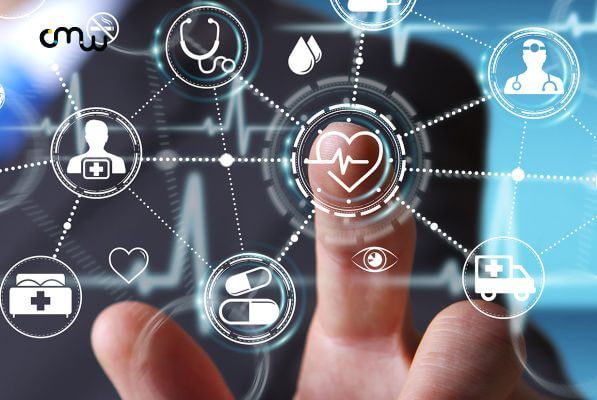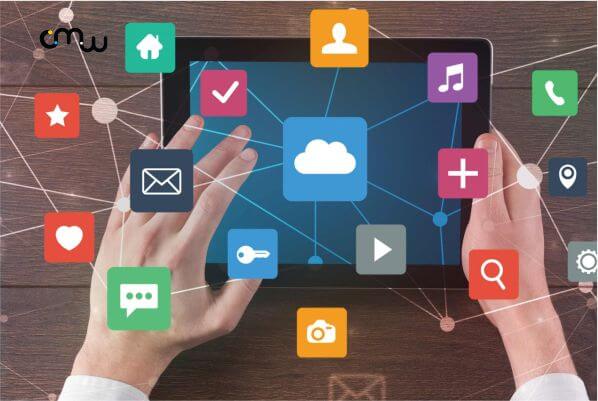Approach of Telemedicine and Telepsychiatry is to prioritize appropriate and affordable care to patients. Previous work has distinctively unearthed the potential for using telemedicine in calamities and public health crises. A telemedicine scheme cannot be fabricated overnight, but U.S. health arrangements that have already executed telemedical upheavals can leverage them for the feedback to COVID-19. As hospitals countrywide have a scarcity of ICU beds and personnel to treat COVID-19 patients, some are finding new ways to utilize telemedicine technology to escalate their ability to keep track of patients.
Telemedicine and its approach
Direct-to-consumer telemedicine is a 21st-century approach to future triage that allows patients to be ably screened. It is both patient-oriented and beneficial to self-quarantine. It protects patients, doctors, and society from vulnerability. It can allow physicians and patients to liaise during the whole day, using smartphones or computers having webcam facility. Respiratory symptoms — one of the early signs of COVID-19 are among the conditions most frequently assessed with this procedure. Health care providers can easily acquire comprehensive travel and exposure histories. Automated screening innovations can be built into the intake process, and restricted epidemiologic information can be used to standardize screening and exercise designs across contributors.
Telemedicine has the potential to guide more patients into hospitals during a pandemic. Telemedicine initiatives require doctors and other personnel to work. At first, it was viewed as a tool for itinerant or critical care. Telemedicine can aid first acknowledgers to liaise with doctors, helping to make sure those who need professional care can get it swiftly and methodically – and, at the same time, redirect those who don’t need hospital care to other provisions or safe in their homes. Most hospitals work at near to full volume in standard times, so, if anything, telemedicine approaches will primarily decrease further stress.
We can deploy improved telehealth solutions so that doctors can expand their range, even if quarantined, with the ability to remotely inspect and scrutinize more patients in a shorter amount of time, reducing the number of patients entering hospitals and medical facilities. Telemedicine, using customized techniques can identify patients who need further care. Thus, telemedicine can be a sturdy collaborative mechanism to guarantee appropriate utilization of emergency departments (EDs), and hospitals, as recognized within the above broader state of affairs. The overall emergency application can also be increased by the addition of clinical examination and diagnostic interpretation, further empowering the potency of the emergency response foundation.
Comprehensive analyses of telehealth data, especially that centering on phone calls regarding the grievance of fever, have formerly provided an opportune and handy picture of the outbreak of many diseases. The high overload of seasonal flu outbreaks evoked the execution of ingenious telehealth based solutions as archetypical outlooks to reduce patient visits to the healthcentres. Taking an indication from the fight against seasonal flu, a vigorous and flexible health-care administration should contemplate adopting related contemporary telehealth approaches in the backdrop of COVID-19. The regions with slender or unidentified mediation of COVID-19, swift advocacy of telemedicine, and significant schooling of the healthcare personnel in the use of telemedicine should be considered among the primary concerns. The extent of persistence increases further in the appearance of vigorous viral outspread.
Telemedicine and course of action
Compendious Med Works' telemedicine procedures can be revamped and broken down into several approaches:
1) Distinguish between new and confirmed patients
The basis of care remains the physician-patient association. It’s reasonable to speak to them by phone or video chat if they face a problem. New patients require an extra bit of care, ensuring that help is always available.
2) Maintain confidentiality
Physician-patient consultations are always secret and the must remain the same.
3) Compose the patient before the appointment
Approach of Telemedicine and Telepsychiatry by the Doctors or interns is about making sure that if the patient is ready to take up telemedicine advice or not. Plus, they should be made familiar with the technology and style of message conveying.
4) Develop your professionality
Web presence must be professional. Bright colors and excessive decoration should be avoided. A friendly tone and good appearance are helpful.
5) Acknowledge when telehealth is not appropriate
There are situations where telehealth is not feasible. Acknowledgment of the inability to evaluate a person's degrading health is a priority that needs to be conveyed.
Telepsychiatry—A great stratagem
Another branch of telemedicine is telepsychiatry, one of the oldest of all health applications with its first appearance in 1959. The current Coronavirus pandemic has proved to be a climacteric for telepsychiatry. Recommendations and agreements have been succeeded already in various parts of the world and are customarily upgraded. Necessary tutelage and theoretical pedagogy could be done online, analogous with the setting-up of the remote services.
There are three approaches to telepsychiatry:
- Organized services, which are distributed to health care facilities generally in an outpatient subdivision.
- The second is on-demand telepsychiatry, which is usually delivered in emergency departments and inpatient segments.
- The third is in-home care owing to a lot of readjustments due to the lockdown procedure.
Drawbacks of Telemedicine
Though tele-ICUs can boost our proportions to have tutored people to provide care still they're limited. Tele-ICUs do not aid the doctors' approval to work at different hospitals. Quite likely, states normally do not allow doctors to exercise medicine without a state license. As a result, tele-ICU purposes may not be as convenient if the coronavirus were to peak before more suppliers can get sanctioned to practice in a way to gain from it. Time and money pose obstacles too, as tele-ICU technology can be costly and take a lot of time to be dispatched and installed. This chronology isn't valuable to the ingress of COVID-19 patients in some coronavirus hotspots. Some retailers are turning to sales tablets and other automation which can be more easily stationed to inflate their capacity to keep observe patients.
















